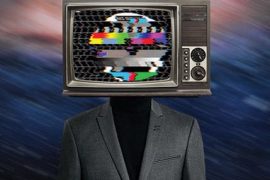What is the Third Person Effect and how does it relate to advertising?

Third Person Effect is a theory developed by Sociologist W. Phillips Davison in 1983. The Third Person Effect occurs when an individual is exposed to a certain mass media message. The Third Person Effect is when a person assumes there is a higher influence of the mass media message on others (the third person) than themselves. These individuals overestimate their abilities, as they believe that others are the ones meant to be affected. According to what L. W. Jeffres proposed, the Third Person Effect does not apply to what is heard on the news or discussed on the radio. Rather, it applies to provocative messages in media content, such as advertisements and public service announcements. Individuals believe that the influence is not meant for “me” or “you” but them, the third person. This theory was tested in experiments by asking people to evaluate how influenced they are compared to others when exposed to a mass communication. (Davison, W. P., 1983)
How the theory relates to advertising
Employing the provocative factor of this theory can increase the effectiveness of the advertisement, thus leading to higher profits. Target audiences who consider themselves to be immune, look at the advertisement thinking “I can’t believe they are falling for this”. After they acknowledge the fact that they are not the target, but others are, they buy what the advertisement is selling. They do that though under the pretense of some other reason with an air of superiority even in some cases.
For instance, there is the product Vimto Cordial, a drink made of a combination of berries that has become over the years part of the experience of the holy month of Ramadan. The advertisement was in line with the already established public opinion of the said product, enforcing its popularity during that month. The tagline of the 2007 campaign was “They’re finishing it all”, doesn’t this sound like a direct reference to the third persons? A message to those who think in the Third Person mentality to take action, and giving them the justification to do so. Their thoughts watching the ad would be akin to “Everyone else is influenced to buy, but not me, I am buying it because otherwise, the third persons will indeed finish it all. I can’t let that happen, especially that it’s been part of my family’s Ramadan tradition for so long.”
The strongest and weakest parts of this theory
The strongest part of the Third Person Effect theory is that it can be empowered by the effect of another theory or even a number of theories. Combined, the desired effect of an advertisement will be more persuasive. According to L. W. Jeffres, Knowledge Gap and Cultivation theory are some of the theories that can serve as complementary factors to the Third Person Effect. The role of education is certainly undeniable in increasing the chances of Third Person Effect to occur. Those who are highly educated tend to be more likely to consider themselves not as easily influenced by the advertisement as the less educated third persons. In addition, the extent to which TV media influence the perception of viewers can contribute to the Third Person Effect. Heavy TV watching can cultivate your perception of any given subject. For instance, your idea of a beautiful woman will be based on what you’ve been watching on TV. All these theories and more can be of incredible influence to the Third Person Effect.
The weakest part of the Third Person Effect stems from the strongest part. Since other theories can be involved in the process, it would be hard to detangle them and determine which of them has really led to the desired effect. The credit can be easily misplaced from the Third Person Effect to a supporting theory.
Now that we know what we know about the Third Person Effect theory, will it make us react differently to such influence? Or will it simply make us aware of it as it happens?
References
Davison, W. P., (1983). The Third-Person Effect in Communication. Public Opinion Quarterly Vol. 47:1-15. By the Trustees of Columbia University. Published by Elsevier Science Publishing Co., Inc.
Jeffres, L. W., Neuendorf, K., Bracken, C., & Atkin, D. (2008). Integrating Theoretical Traditions in Media Effects: Using Third-Person Effects to Link Agenda-Setting and Cultivation. Mass Communication & Society



